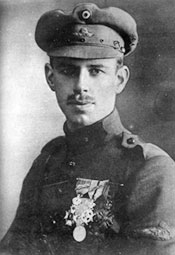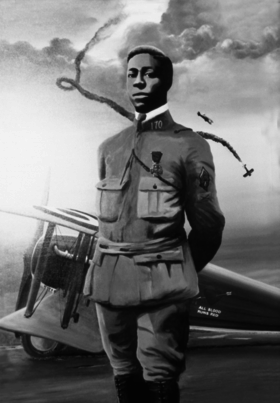
Wright military flyer of 1909, airplane built by Wilbur and Orville Wright and sold to the U.S. Army Signal Corps in July 1909. This WW1 airplane was the world’s first military airplane. For the Wright brothers, it represented a first step in their efforts to produce marketable aircraft incorporating the principles that they had employed six years earlier in achieving the first powered heavier-than-air flight. The 1909 flyer was like a series of aircraft that were produced by the Wrights in Dayton, Ohio, from 1907 to 1909 and are now known by the designation “Model A.” Like the other Wright machines, it was a biplane design employing the “wing-warping” control system and stabilized in the pitch axis by a horizontal stabilizer positioned forward of the wings. Twin pusher propellers were turned through a chain drive by a four-cylinder engine that generated up to 32 horsepower. This WW1 airplane was launched into the air by a weight falling from the top of a derrick. The Army’s performance specifications called for an observation craft that would keep a pilot and passenger aloft for more than one hour and fly at an average speed of 40 miles (65 km) per hour. A throng of 10,000 people, including President William Howard Taft, gathered at Fort Myer, Va., on July 27, 1909, to watch Orville complete one of the final qualifying flights for the sale. The event was filmed by famed inventor, Thomas Edison. Lieutenant Frank Purdy Lahm joined Orville for a flight of 1 hour 12 min. 374/5 sec., setting a new world’s duration record for flight with a passenger.
First Pilot Trainees
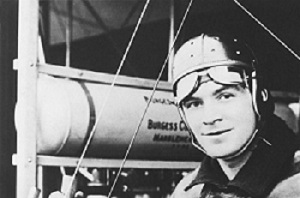
Army Lt. Henry Arnold

Civilian Philip Parmelee
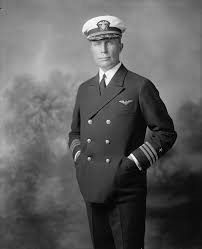
Navy Lt. John Rodgers
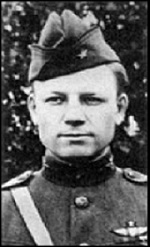
Army Lt. Thomas Dewitt
The beginnings Of The Aerospace Industry

Origin of the aerospace industry dates to 1903 when Wilbur and Orville Wright demonstrated an airplane capable of powered, sustained flight (see Wright flyer of 1903). The Wright brothers’ success was due to detailed research and an excellent engineering-and-development approach.
Their breakthrough innovation was a pilot-operated warping (twisting) of the wings to provide attitude control and to make turns. Patents with broad claims for their wing-warping technology were granted in Europe in 1904 and in the United States in 1906. The French government was the first to negotiate with the Wright brothers for the sale of their patents for 1,000,000 francs, with a deposit of 25,000 francs for the option, which was later forfeited. The first recorded business transaction of the aerospace industry occurred in May 1906 when J.P. Morgan and Company in New York City paid the Wright brothers the forfeited deposit. The first sale of a military aircraft was made on February 8, 1908, when the Wright brothers contracted to provide one Model A flyer (see Wright military flyer of 1909) to the Signal Corps of the U.S. Army for $25,000, with a $5,000 bonus should it exceed the speed requirement of 40 miles (65 km) per hour. The following year the aircraft successfully completed qualifying trials for completion of the sale, which included the bonus.
In March 1909 the British entrepreneurs Eustace, Horace, and Oswald Short purchased a license to produce six Wright flyers and set up the company Short Brothers Limited on the Isle of Sheppey, establishing the world’s first assembly line for aircraft. In the same year the American aviation pioneer Glenn Curtiss joined the list of airplane producers and made the first commercial sale of an aircraft in the United States. In France, Henri Farman, Louis Blériot, Gabriel and Charles Voisin, and Léon Levavasseur entered the industry, and experimental groups started airplane production in Germany and Russia. When Blériot crossed the English Channel in July 1909 in his Blériot XI monoplane, the ensuing fame resulted in worldwide orders for more than 100 aircraft. In 1909, when the Wright Company was incorporated with a capitalization of $1,000,000, the Wright brothers received $100,000, 40 percent of the stock, and a 10 percent royalty on every plane sold. The company developed extensive financial interests in aviation during those early years but, counter to the recommendations of its financiers, did not establish a tight monopoly.
The War To End All Wars

(German-Fokker Dr1)The first dogfights between aircraft occurred in mid-1915. “Fighting scout” planes had begun to accompany artillery spotter and reconnaissance aircraft. As the fighters of each side tried to attack the planes defended by the other, combat between fighters began. Fabric Skin. Most WW1 fighter airplanes were enclosed in a compact layer of material.
During most of the war, biplanes were used. Two sets of wings gave them more lift and stability than a single pair did. The British government banned the Royal Flying Corps from using monoplanes, as pre-war experiments seemed to indicate they were unstable and unsafe to use. The success of biplanes led to experiments with three-winged triplanes.The Fokker Dr.I and Sopwith Triplane were both successes. The Fokker triplane, which achieved excellent maneuverability and rate of climb at the cost of reduced speed, was the favorite plane of Manfred von Richthofen, the famous Red Baron. When a fault led to the withdrawal of most of those planes, Anthony Fokker presented Richthofen with a stronger model so he could keep flying it. To make fighter planes more effective, they needed forward firing guns lined up with the pilot’s view, to enable them to aim easily while flying. It created a problem. The closer it was to his line of sight, the more likely the gun was to shoot off the plane’s own propeller. The French made the first attempt to solve it. The propeller was reinforced with steel wedges to deflect bullets, but they could still do harm to the propeller, and the ones that bounced off might hit the pilot. In 1915, Dutch engineer Anthony Fokker provided the solution for the Germans, regarding their soon-to-become WW1 airplanes. His interrupter gear interacted with the gun’s mechanism, stopping it from firing when a propeller was in front of the barrel. It could still fire in the split seconds in between. In July 1915, the Fokker EI plane entered the war, and German planes became proper war machines. Their opponents soon developed equivalents, based in part on Fokker’s work.
Duel In The Sky Among WW1 Airplanes

(German-M5K)Initially air combat was extremely rare, and definitely subordinate to reconnaissance. There are even stories of the crew of rival reconnaissance aircraft exchanging nothing more belligerent than smiles and waves. This soon progressed to throwing grenades, and other objects – even grappling hooks. The first WW1 airplane brought down by another was an Austrian reconnaissance aircraft rammed on 8 September 1914 by Russian pilot Pyotr Nesterov in Galicia in the Eastern Front.
Both planes crashed as the result of the attack killing all occupants. Eventually pilots began firing handheld firearms at enemy aircraft, however pistols were too inaccurate and the single shot rifles too unlikely to score firearms at enemy aircraft. On October 5, 1914, French pilot Louis Quenault opened fire on a German aircraft with a machine gun for the first time and the era of air combat was under way as more and more aircraft were fitted with machine guns.
Other modifications soon followed. Moving the engine from the rear of the plane, which was known as a pusher configuration, to the front of the aircraft. An important drawback was that pusher designs tended to have an inferior performance to tractor types with the same engine power because of the extra drag created by the struts and rigging necessary to carry the tail unit. They were simply too slow to catch their quarry. Another was the wings themselves. A single wing configuration known as a mono wing design and a two-wing configuration known as biplane. And a monstrous three wing triplane was developed by both sides.
Aces High
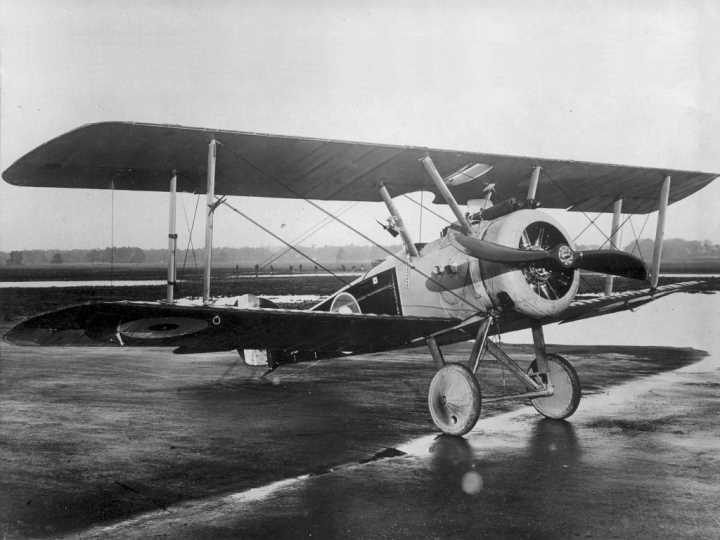
(British-Sopwith Camel)The term flying ace was first used by French newspapers during World War I, describing Adolphe Pégoud as l'as (the ace), after he downed five German WW1 airplanes. When aircraft began to shoot or force down other aircraft, systems to count "air victories" were subsequently developed. Lone aerial combat provided an outlet for acts of personal bravery. The aces were seen as chivalrous heroes engaged in honest and impressive one-to-one fighting. However, the lives of air aces were often cut short through combat or because of mechanical failure. This only fueled their status as heroic martyrs. Of the eight aces listed here, seven were killed in action between 1916 and 1918 or died in flying accidents during or after the war.
Before the Red Baron Manfred von Richthofen was Germany's air power hero, it was Oscar Boelcke, a German air ace and the mentor to von Richthofen and the "Flying Circus." Boelcke was one of Germany's first fighter aces and, when he took command of a group of fighters, he did all that he could to pass on the knowledge that would keep the men alive. He came up with eight rules that would stand for decades, and most still apply today. There were multiple versions of the rules, all with variations in wording. Many of Boelcke's concepts, conceived in 1916, are still applicable today, including use of sun and altitude, surprise attack, and turning to meet a threat. But they all carried the same eight sentiments.
Despite the German's early lead in combat tactics and their 'Dicta Boelcke' the Allies were not slow to adapt and develop their own tactics. The Royal Flying Corps' Albert Ball was one of a band of pilots who liked to fly solo and he developed 'stalking' tactics for going after enemy two-seaters. He even used his Lewis gun in its top wing adjustable Foster mounting to fire upwards into the underside of unsuspecting WW1 airplane. Other RFC pilots such as James McCudden and Mick Mannock emphasized mutual support and the advantages of attacking from height. Mannock expressed this in a list of aerial combat rules that were similar to Boelcke's.
Several other Allied pilots earned distinction, in particular, U.S. pilots Eddie Rickenbacker and Frank Luke, U.K. pilot William Bishop, French pilot, Rene Fonck.
Legendary WWI Pilots

GER - Manfred Von Richthofen

France - Renee Fonck

Canada - William Bishop

US - Eddie Rickenbacker








